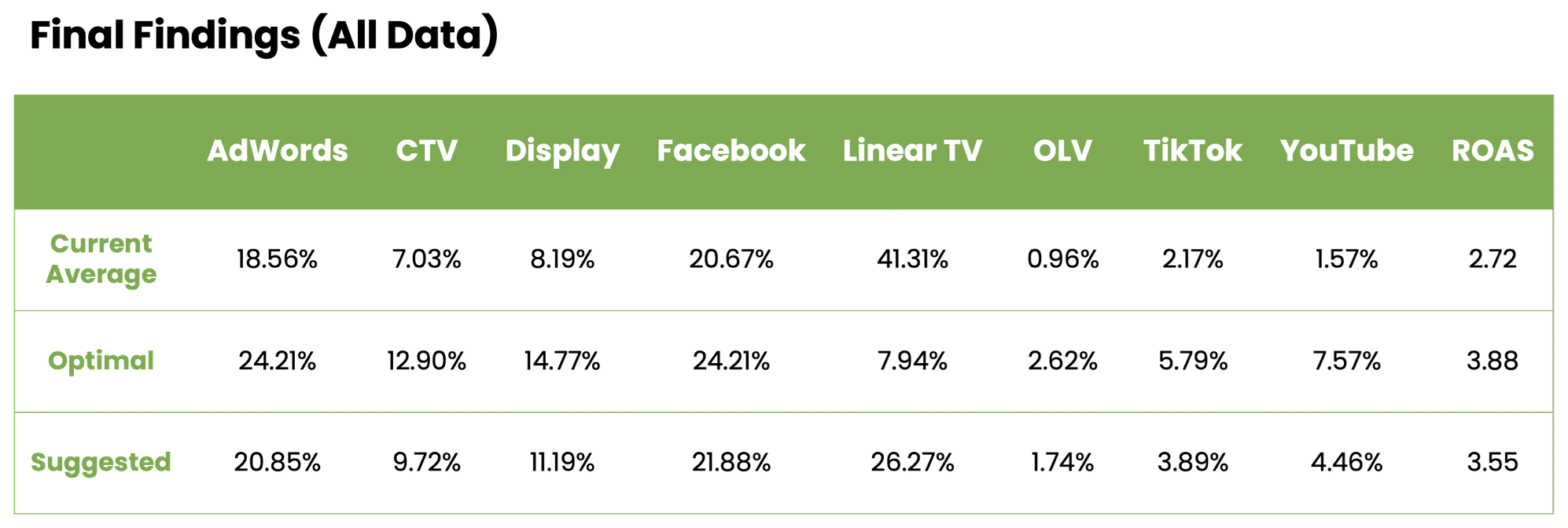Embracing AI for cross-channel attribution: A potential game changer
Cross-channel attribution has been a challenge for marketers since the dawn of advertising— remember the old adage that half of your advertising worked, but the trouble was that you didn’t know which half?
The internet made things better for many advertisers, as it provided click and cookie-based attribution that enabled a lot of e-commerce growth. But brand advertisers still struggled given the lack of clicks across much of their media, and recent privacy legislation and unilateral action by Apple have once again changed attribution for everyone.
Even as CMOs struggle to make cross-channel decisions in the current environment, the rapid emergence of machine learning (ML) and artificial intelligence (AI)-based models provides some room for hope that the situation can improve, and can (finally) do so across traditional channels. ML models should allow marketers to unlock hidden connections across channels and make better allocation decisions going forward.
A cutting-edge machine learning approach to attribution
In order for AI-based cross-channel attribution solutions to work, they’ll need access to performance data from all sources, including both marketing inputs (such as spend and effort data) and outputs (revenue, leads, etc.).
All of these data points change in subtle ways every single day, and the impact can be lost amid the noisiness of the data. Where traditional analytics methods have struggled to see through the noise, more advanced ML approaches can be used to scrutinize the day-to-day variations in these data points more comprehensively, extracting signals that have up to this point been invisible. By doing so, machine learning solutions can offer a source-agnostic view of performance across channels, even including those offline ones that have long puzzled marketers.
What testing revealed
We tested a ML-based approach, looking at performance across a wide variety of channels, to confirm this general thesis. Before we made any changes, this was the baseline:

By leveraging AI to analyze past data, we were able to simulate alternative mixes of spend and sales to test against reality. Note that one cannot simply look at single-day effects of spend on sales; every channel has a different arc of influence over time. Some channels, like search and social, do tend to have more immediate effects on sales, but others take days or even weeks to reveal their full influence.
After accounting for these time delays, the AI model suggested that significant changes needed to be made to media budget allocations, especially with regards to linear TV.

As you can see, our ML-based model indicated that significant improvements to Return on Ad Spend (ROAS) were possible with reallocation. Indeed, when we began making changes, we saw significant improvements on the same order the models suggested!
Dealing with uncertainty
One thing that many marketers find when using tools like ChatGPT is that AI can be overconfident. It will be important when making large allocation changes to understand the risk of overadjustment and to balance the desire for the best possible outcome with the danger of doing too much.
Unless marketers intentionally create larger day-to-day changes in spend allocation, any ML-based model won’t have as much knowledge of larger changes and will be prone to error at the boundaries of its knowledge. As marketers develop models, they must thus be mindful of how AI can make mistakes and put in place mechanisms to limit them.
The road ahead for cross-channel attribution
Our initial tests of AI-based attribution models have been promising, and we’re excited about where these approaches can take the industry. Major platforms such as Facebook and Google are already using AI models for their own reporting, but first or third-party, less biased models are necessary to provide a broader view of conversions for marketers.
We believe AI-based attribution models will offer a more holistic view of the interconnectedness of advertising channels, helping marketers to understand which platforms are genuinely driving lower-funnel activity. Although marketers may have some concerns about the challenges they currently face, AI holds the potential to deliver even better cross-channel attribution in a more privacy-centric environment. By adopting this approach, marketers can gain valuable insights into their media mix and make more informed decisions about their advertising efforts.
It's time for more of the marketing community to try this approach and get excited about the opportunities that AI creates for improved attribution. The future of advertising is here, and it's powered by AI.




































